 By:
Joe Green
By:
Joe Green
This is a fundamental question and a big part of proper cannabis cultivation. Alas, there is no simple answer.
The needs for growing healthy plants vary greatly as many factors must be considered.
The plant has different phases; the growing medium you use and the external influences combined create a big difference in your plant’s thirst. You have to feel the soil, learn to read the plant, and know what to do.
Ideally, you will be able to create the right balance when watering your cannabis plants, neither too much nor too little. Too little will slow the growth and decrease the plant size, and too much water will take its toll in various ways, none of them good. You’ll need to find that sweet spot, and we will help you to do so.
Creating the optimal environment will minimize stress on your cannabis plants and allow them to focus all their energy on growing and creating those gorgeous buds for us. It takes some effort and getting used to it, but we are confident that you will become a water management specialist!
What are the factors you must consider in the calculation?
Where you live will affect how thirsty plants get. If you live in Death Valley in The United States, the hottest place on earth at 45°C (113°F), your marijuana plant will need more water than if you lived in the village of Mawsynram in India, the wettest place on earth with 467 inches of rain per year!.
The relative heat, humidity levels, sunlight, and rainfall in your area will affect the watering frequency of your cannabis plants.
If you grow cannabis indoors, you have more control over these elements.
That’s why many growers prefer indoor growing. It’s more stable and easier to regulate, with fewer distractions making it give exactly what the plants need. Also not unimportant; many people prefer indoor-grown cannabis, above outdoors.
Which phase and how old your cannabis plants are will also affect the water they need. Simply put: a seed under the soil has lower water demands than a fully grown plant. The smaller seedling does not have the mass yet, that a fully grown plant has.
A sprouting plant needs more water than seeds but less than an adult plant. Again, there are size issues at play here. At certain stages of growth, the plant will require more or less water than it did the day before.
So how can you tell if your plant needs more water or less water?
Well, there are several ways to figure this out.
If you’re growing cannabis in soil, you need to be careful not to overwater your plants. Soil is great at moisture retention, but it also drains quickly, so get your hands dirty and check regularly.
Hydroponics systems rely on a constant water supply, so if your plants show signs of drought, they may not recover. So keep your eyes open, check the reservoir level regularly, and top up as needed.
Every grow medium has pros and cons; the container you use or the casing you have built should balance out the cons. Making it the perfect match for growing your marijuana plants.
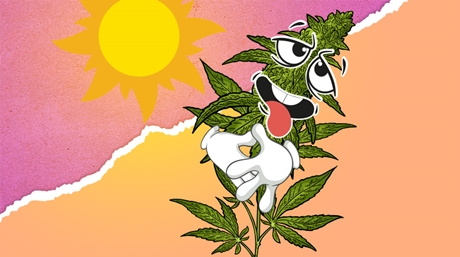
Your plant will likely tell you if it needs water. There are two simple tell-tale signs:
A third is for the more experienced grower:
If you have mastered water plants, the leaves will be nice dark green, the color we all know and love. We salute you!
A plant that has brown leaves or yellowish may have root rot. This occurs when you have overwatered your plant, and its roots have begun to rot.
This can also happen when your pots or casing have too few or clocked drainage holes, causing little to no water runoff. And causing a level of standing water on the bottom, drowning parts of the plant’s root system.
For beginner cannabis growers, we advise keeping detailed notes. You can learn from these and apply the notes to later growth.
But remember, this is not an exact science; it’s nature! Every plant and growth is different; watch your plant for what it does. It will tell you when something is off.
We recommend daily, easily done with an irrigation system on a timer, but more of a challenge when you water by hand.
You might go out one day; this does not have to be a disaster immediately. You do have a bit of wiggle room. If you know you won’t be able to water it tomorrow, you can add some extra today. Then when you are back the day after tomorrow, you have to check the soil, and if it’s in the normal range, resume your normal water scheduling.
We will elaborate on the most common situations to give you more insight.
If you grow your weed directly in the soil, you must monitor how your soil behaves. If the soil dries out quickly, they don’t get enough water. You will need to water the plants more often.
If the soil remains damp for longer than 3-4 days, you will need to look at the soil to see if it is too compact. You may also want to ensure that the water runoff and draining work properly.
Find the right balance for good soil. Learn from your personal experience and become consistent.
If you grow your marijuana in a pot, it is easier to keep an eye on the dryness of the soil.
You can get into the pot and see how the soil is doing. Also, you control when they are watered. So the chances of them being over-watered are less likely – if you are being consistent.
Some pots are breathable and allow moisture to evaporate from the sides. I am thinking about terracotta pots and unglazed clay pots. Other pots will trap moisture; this can happen with plastic pots. Watch your soil to make sure it isn’t too wet or too dry.
Never wait for the soil to dry to water your plants. I think it goes without saying that if the top of the soil is still wet, you do not need to water the plants.
Super soil is a potting mix with organic nutrients added to the soil.
You will need to prepare well in advance as it can take up to 6 months for the organic matter to dissolve and create your super soil ecosystem.
Super soil has its manual as it quickly has enough water and only requires watering 2 to 3 times per week.
There are a few different ways to water your marijuana plants, depending on how many plants you want to grow and where you are growing.
The two most common ways are:
This method is too much work if you grow in large quantities. But if you start growing marijuana, chances are you will only be growing a few plants.
So if you only have a few plants, the ideal tool for your cannabis is a watering can. A watering can allow you to water the soil and the leaves – if they are out of direct sunlight.
However, it has its drawbacks. Depending on how many plants you have, you may need to fill it multiple times, and adding nutrients is a challenge. Also, the amount of water the plant needs goes up as the plant gets older, so more and more runs for you. However, it is still a good, simple, and cheap way to water cannabis.
From our personal experience, we recommend an irrigation system with a basin. If you have the budget, of course!
There are many benefits to growing cannabis with an irrigation system:
These give your watering schedule perfect consistency, water quality, stable PH level, dosage, timing, and set frequencies. A relaxed way of growing weed, as you can sit back and watch your beauties grow!
What are some common problems associated with watering cannabis plants, and how can you avoid them?
In a rotting root system, the roots will be colored dark brown instead of the ivory color they normally have. Invest in pots with good drainage holes and check them after each harvest. Still, an excess of water on the bottom of your pot (or casing) will cause this.
Burned leaves. If you water your plants while they are in “daylight,” the water drops can function as a magnifying glass and burn the leaves.
With discolored leaves, the plant may not receive the right nutrient requirements, the PH level is off, or it is an indicator of root rot.
As we have mentioned earlier, the right doses of water will prevent stress and create healthy plants. The amount that is enough varies because of many different factors. Like combinations of the soil, growing medium, plant phase, and the climate where you live.
Reading your plant’s needs is a skill you have to master so that you can adjust the watering schedule accordingly to the situation and thus create optimal environmental conditions.
The better you become, the bigger your harvest, so it’s worth your time!
Are you ready to start growing some cannabis plants of your own? Be sure to follow our tips for watering, and you will be well on your way!
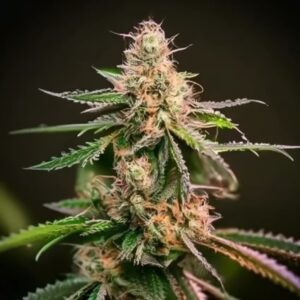


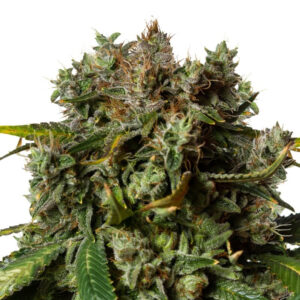


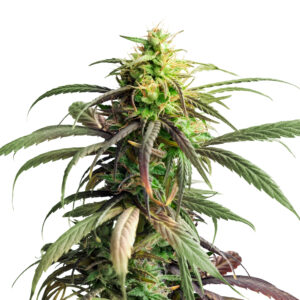






Related Posts

As the world grapples with climate change and resource scarcity, a growing awareness has emerged around sustainable practices, especially in the area of cultivation. Green thumb enthusiasts, amateur horticulturists, and professional growers are all actively seeking environmentally-friendly methods to nourish their plants. Our focus for today’s discourse, however, pertains to a particular plant that’s stirred much debate and interest.
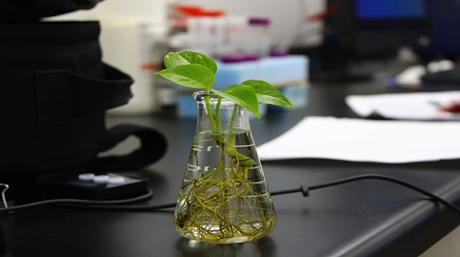
We’ve put together a comprehensive guide on how to grow cannabis hydroponically. We’ll go over everything you need to know, tips you don’t want to miss, and mistakes to avoid. By the end, we want you to feel confident about your next grow project.